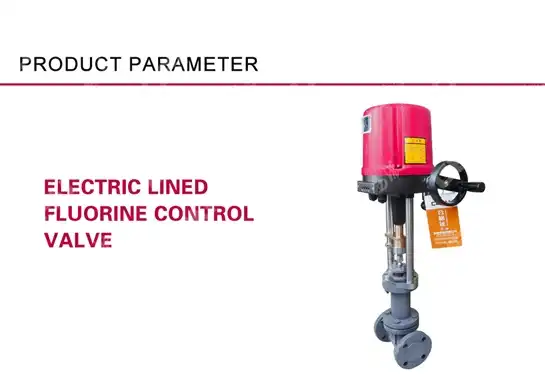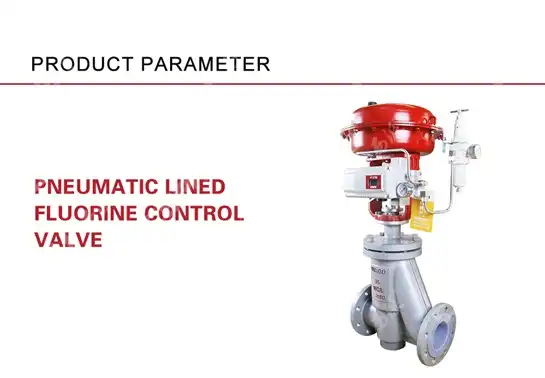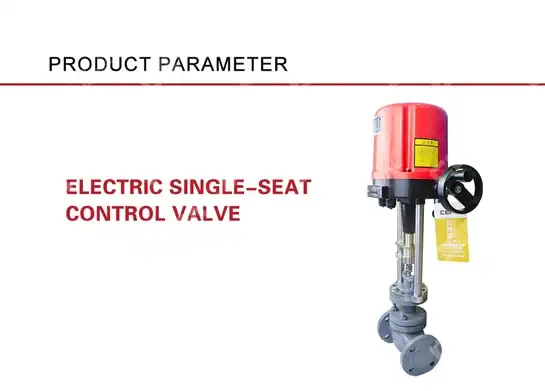Sizing a High-Temperature Control Valve for Optimal Efficiency
In industrial environments where temperatures soar beyond conventional limits, selecting and sizing the right High-Temperature Control Valve becomes a critical challenge that can make or break operational efficiency. Picture this scenario: a petrochemical facility experiencing frequent shutdowns due to valve failures, costing millions in lost production while compromising safety protocols. The culprit? Improperly sized high-temperature control valves that cannot handle the extreme thermal conditions and precise flow control requirements of modern industrial processes.
Understanding High-Temperature Control Valve Fundamentals
-
Critical Parameters for High-Temperature Applications
High-Temperature Control Valve systems operate in environments where standard valves would fail catastrophically. These specialized valves must handle temperatures ranging from 450°C to over 1000°C while maintaining precise flow control and structural integrity. The fundamental principle behind sizing these valves involves calculating the flow coefficient (Cv) based on fluid properties, pressure differentials, and temperature-specific considerations that become increasingly complex at elevated temperatures. When dealing with high-temperature applications, fluid properties undergo significant changes that directly impact valve sizing calculations. Viscosity decreases substantially with temperature increases, while vapor pressure rises, potentially causing cavitation issues. High-Temperature Control Valve sizing must account for these thermal effects on fluid density, compressibility factors, and Reynolds numbers to ensure optimal performance throughout the operating temperature range. The material selection for High-Temperature Control Valve applications becomes paramount, as standard carbon steels lose strength rapidly above 400°C. Advanced alloys such as Inconel, Hastelloy, and specialized stainless steel grades maintain their mechanical properties at extreme temperatures, ensuring valve reliability and longevity in demanding industrial environments.
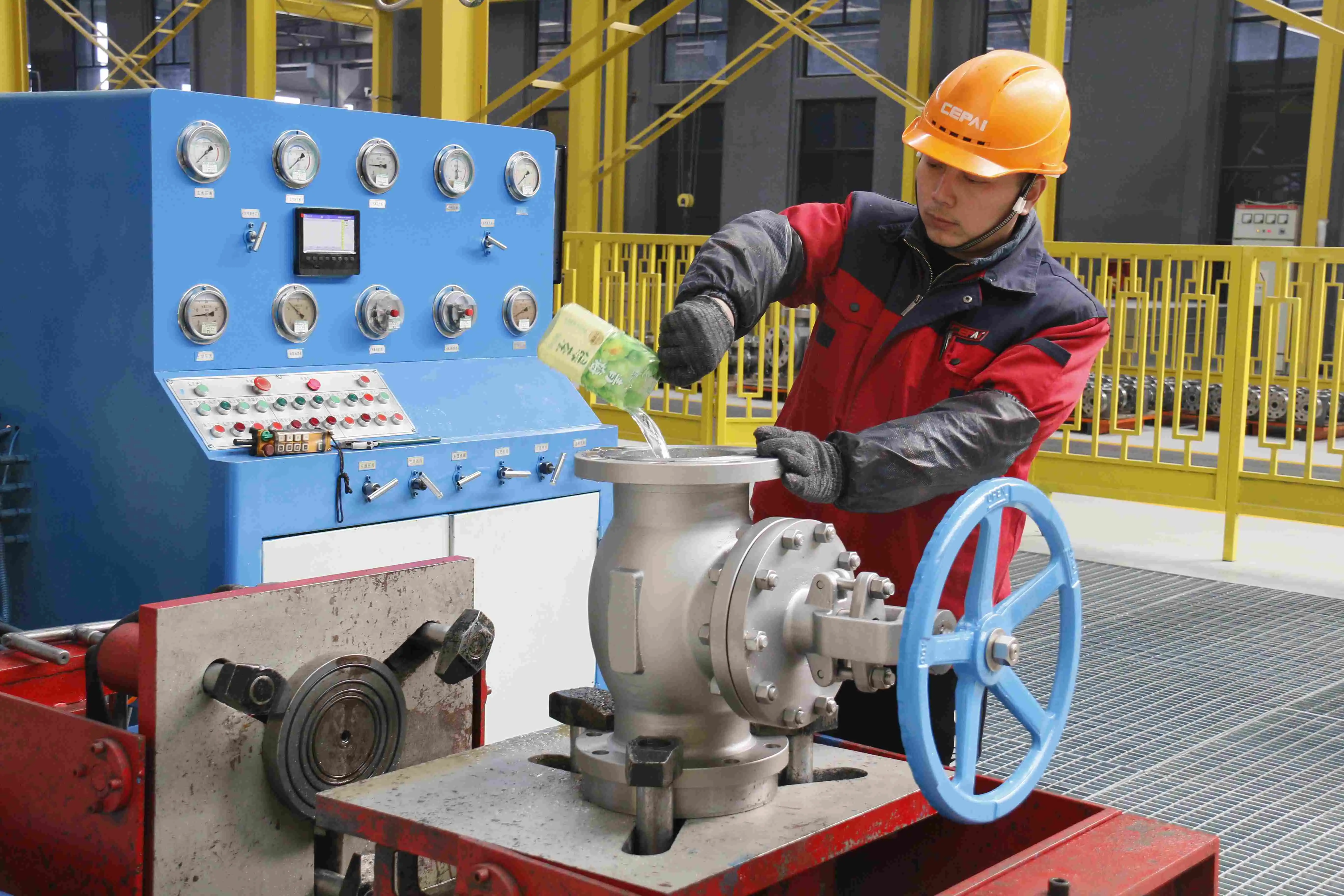
-
Thermal Expansion and Sizing Considerations
Thermal expansion presents unique challenges in High-Temperature Control Valve sizing that extend beyond simple flow calculations. As valve components expand at different rates due to varying thermal coefficients, the effective flow area can change significantly from design conditions. Professional engineers must incorporate thermal growth calculations into their sizing methodology to maintain accuracy across the entire operating temperature spectrum. The piping system surrounding High-Temperature Control Valve installations experiences substantial thermal stresses that can affect valve performance and sizing requirements. Proper sizing must consider pipe expansion joints, anchor points, and thermal insulation effects that influence the actual operating conditions of the valve. These factors can alter pressure drops and flow patterns, necessitating adjustments to the initial sizing calculations.
Advanced Sizing Methodologies for High-Temperature Control Valves
-
Flow Coefficient Calculations at Elevated Temperatures
The traditional Cv calculation methodology requires significant modifications when applied to High-Temperature Control Valve applications. Standard formulas assume constant fluid properties, but at high temperatures, these properties become functions of temperature and pressure, requiring iterative calculations to achieve accurate results. The modified Cv equation must incorporate temperature-dependent viscosity corrections, compressibility factors, and critical pressure ratios specific to high-temperature operations. Choked flow conditions become more prevalent in High-Temperature Control Valve applications due to increased vapor pressure and reduced liquid density at elevated temperatures. The critical pressure ratio changes with temperature, affecting the transition point between recoverable and non-recoverable pressure losses. Accurate sizing must identify these critical flow conditions and size the valve accordingly to prevent operational instabilities and performance degradation. Modern computational fluid dynamics (CFD) analysis has revolutionized High-Temperature Control Valve sizing by providing detailed insight into flow patterns, heat transfer effects, and pressure distributions within the valve body. These advanced simulation tools allow engineers to optimize valve geometry for specific high-temperature applications, ensuring maximum efficiency and reliability while minimizing pressure losses and thermal stresses.
-
Pressure Drop Optimization in High-Temperature Systems
High-Temperature Control Valve sizing must balance the competing requirements of adequate pressure drop for control authority while minimizing energy losses in the system. At elevated temperatures, fluid properties change dramatically, affecting the pressure drop characteristics and control valve performance. The optimal sizing strategy involves selecting a valve size that maintains 20-80% opening range across the expected flow conditions while accounting for temperature-induced property variations. The phenomenon of flashing and cavitation becomes more critical in High-Temperature Control Valve applications, as the increased vapor pressure at high temperatures reduces the margin between operating pressure and vapor pressure. Proper sizing must include cavitation index calculations and selection of appropriate valve trim designs to prevent damage and maintain control accuracy throughout the temperature range.
High-Temperature Control Valve Selection Criteria
-
Material Compatibility and Thermal Performance
Selecting appropriate materials for High-Temperature Control Valve applications involves comprehensive analysis of thermal cycling effects, corrosion resistance, and mechanical properties at operating temperatures. The valve body, trim, and sealing elements must maintain their integrity throughout repeated thermal cycles while providing leak-tight shutoff and precise flow control. Advanced metallurgical considerations include creep resistance, thermal fatigue, and stress corrosion cracking susceptibility. Sealing technology for High-Temperature Control Valve applications has evolved significantly, with graphite-based packing systems, metal-to-metal seals, and specialized elastomeric compounds designed for extreme temperature service. The selection of sealing elements directly impacts valve sizing, as seal friction and thermal expansion effects influence the actuator sizing requirements and overall valve performance characteristics. The actuator sizing for High-Temperature Control Valve applications must account for increased friction forces due to thermal expansion and material property changes at elevated temperatures. Pneumatic actuators require special consideration for air supply temperature and pressure variations, while electric actuators need thermal protection and enhanced motor specifications to operate reliably in high-temperature environments.
-
Process Integration and System Design
High-Temperature Control Valve installation requires careful consideration of thermal insulation, heat tracing, and cooling systems that can affect valve performance and sizing requirements. The thermal environment surrounding the valve influences actuator performance, positioner accuracy, and overall control loop stability. Proper system design includes thermal barriers, cooling jackets, and extended bonnets to protect critical valve components from excessive heat exposure. The control system integration for High-Temperature Control Valve applications involves specialized instrumentation capable of operating in elevated temperature environments. Temperature compensation in flow measurement, pressure sensing, and position feedback systems becomes critical for maintaining control accuracy. Advanced control algorithms may be required to account for temperature-induced changes in valve characteristics and process dynamics.
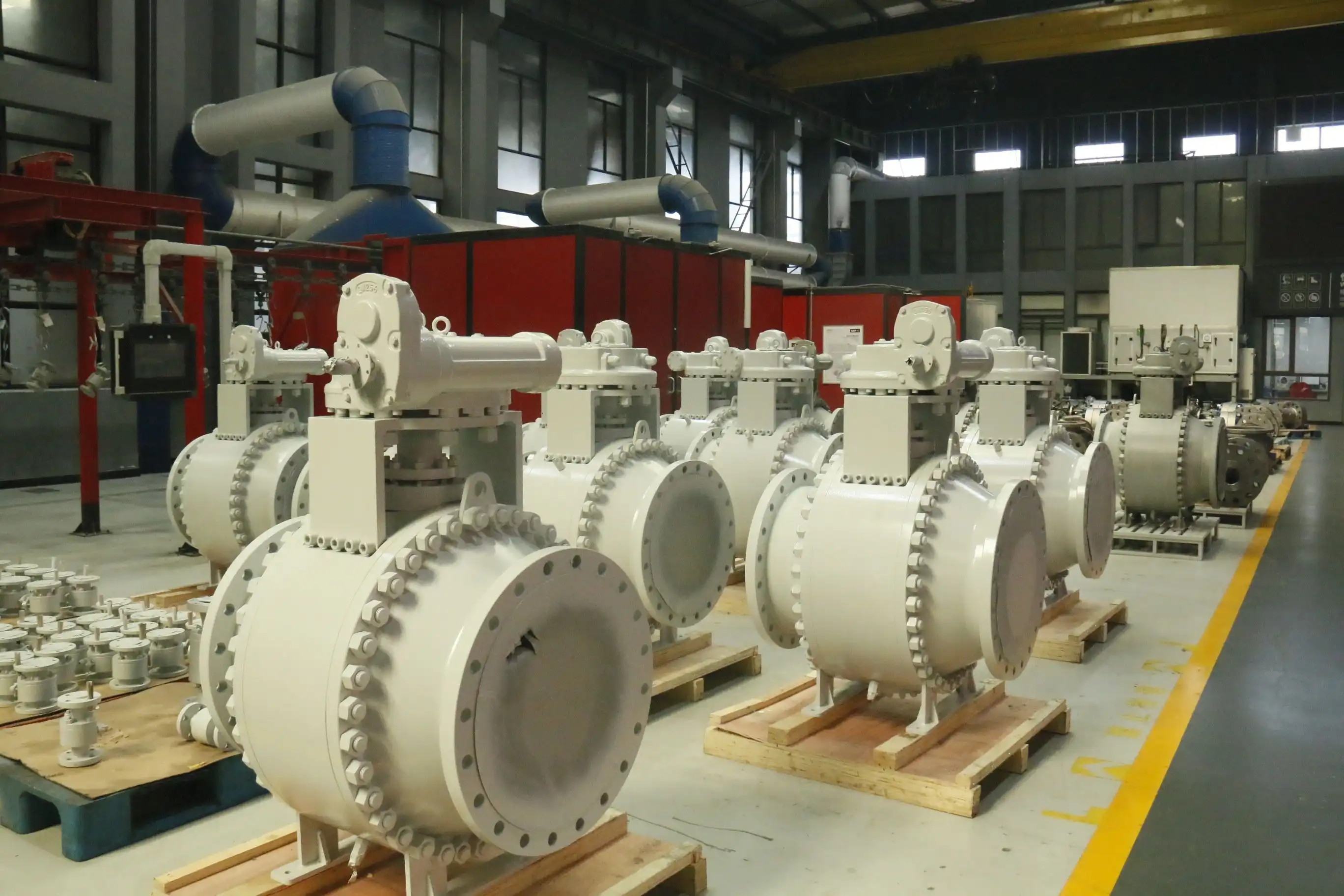
Optimization Strategies for Maximum Efficiency
-
Advanced Trim Design and Flow Characteristics
High-Temperature Control Valve efficiency optimization involves selecting appropriate trim designs that maintain stable flow characteristics across the entire temperature range. Anti-cavitation trim, characterized flow patterns, and noise reduction features become more critical at elevated temperatures due to increased fluid energy and potential for destructive cavitation. The trim geometry must be optimized for the specific high-temperature application to maximize efficiency while minimizing maintenance requirements. Flow characteristic linearization becomes challenging in High-Temperature Control Valve applications due to temperature-dependent changes in fluid properties and valve coefficients. Advanced trim designs incorporate compensation features that maintain consistent flow characteristics regardless of temperature variations, ensuring optimal control performance and energy efficiency throughout the operating range. The valve recovery factor (Fl) and liquid pressure recovery factor (FL) change with temperature, affecting the valve's ability to recover pressure downstream of the restriction. High-Temperature Control Valve sizing must account for these temperature-dependent factors to ensure accurate flow predictions and optimal valve selection for maximum system efficiency.
-
Predictive Maintenance and Performance Monitoring
Modern High-Temperature Control Valve systems incorporate advanced monitoring capabilities that provide real-time performance data for optimization and predictive maintenance. Temperature profiling, vibration analysis, and position feedback systems enable operators to identify potential issues before they impact system efficiency. These monitoring systems also provide valuable data for refining valve sizing calculations and improving future installations. Digital valve controllers and smart positioners designed for high-temperature service offer enhanced diagnostics and performance optimization features. These intelligent devices can automatically compensate for temperature-induced changes in valve characteristics, maintaining optimal control performance while providing detailed operational data for system optimization and maintenance planning.
Conclusion
Sizing a High-Temperature Control Valve for optimal efficiency requires comprehensive understanding of thermal effects on fluid properties, advanced calculation methodologies, and careful consideration of material compatibility and system integration requirements for reliable high-temperature industrial operations.
Cooperate with CEPAI Group Co., LTD.
As a leading China High-Temperature Control Valve manufacturer with over 15 years of specialized expertise, CEPAI Group Co., LTD. stands at the forefront of high-temperature valve technology. Our state-of-the-art facility in Jiangsu Province, spanning 56,000 square meters, houses the longest high-precision intelligent manufacturing production line in the Asia Pacific region, ensuring exceptional quality for every High-Temperature Control Valve we produce.
CEPAI Group holds prestigious certifications including API Q1, API 6A, API 6D, and comprehensive ISO quality management systems, making us your trusted China High-Temperature Control Valve supplier for critical industrial applications. Our extensive qualifications include SIL certifications for control valves, demonstrating our commitment to safety and reliability in high-temperature environments.
Our comprehensive services extend beyond manufacturing to include pre-sales technical consultation, customized High-Temperature Control Valve solutions, installation support, and advanced remote monitoring capabilities. As a premier China High-Temperature Control Valve factory, we offer competitive High-Temperature Control Valve wholesale pricing while maintaining the highest quality standards through our CNAS-certified laboratory testing facilities.
Whether you need High Quality High-Temperature Control Valve solutions for petrochemical, power generation, or specialized industrial applications, our experienced engineering team provides expert sizing calculations and technical support. Contact us today at cepai@cepai.com to discuss your specific requirements and discover why leading companies choose CEPAI Group as their preferred China High-Temperature Control Valve supplier. Bookmark this page for future reference and reach out whenever you need reliable High-Temperature Control Valve solutions.
References
1. "Control Valve Handbook" by Emerson Process Management, Fourth Edition - Comprehensive guide covering advanced sizing methodologies and high-temperature applications
2. "Valve Selection and Sizing for High-Temperature Steam Service" by Fisher Controls International - Technical bulletin detailing specific considerations for elevated temperature valve applications
3. "Industrial Control Systems: Mathematical and Statistical Models and Techniques" by Armando B. Corripio - Academic reference covering control valve sizing calculations and optimization strategies
4. "Process Control: Modeling, Design and Simulation" by B. Wayne Bequette - Engineering textbook including advanced control valve selection and sizing methodologies for industrial applications
_1745994738000.webp)
Get professional pre-sales technical consultation and valve selection services, customized solution services.
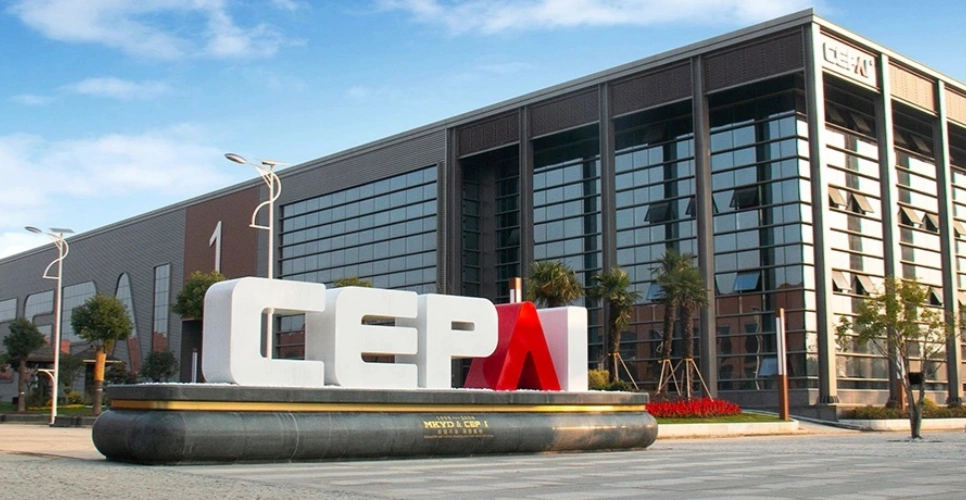
About CEPAI
